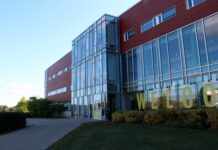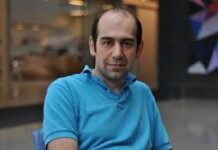Members of the UW community are taking steps to improve accessibility in STEM for themselves and others, whether out of necessity or simple compassion.
One aspect that differentiates studies in STEM fields is the usage of labs, which can present unique accessibility issues both in terms of the structure of the classes and the spaces themselves.
Graduate student Emma Collington is currently working towards her PhD in molecular genetics and holds an undergraduate degree from UW in psychology and biomedical sciences. She has a connective tissue disease that causes overly stretchy organs and tissues, which also makes her immunocompromised.
One factor that led Collington to avoid taking certain labs, even those that would have aided her training, is that they can run long and often late, citing a 7 to 10 p.m. lab as particularly brutal.
“I only have a certain number of working hours in a day. And that’s true for a lot of people with disabilities,” she said, adding that she gets “maybe three or four good hours in a day” to do work. “And so for me, a 7 p.m. lab was like, ‘oh my goodness, I’ve lost the whole day to that lab or that lab will make me lose the whole next day.’”
Collington described seeing long labs on her course schedule and thinking, “There is no way I could ever do that.” However, she encourages students to try contacting instructors and informing them of their needs to see if they can be accommodated, rather than opting out of labs.
She acknowledged that though it may be scary to ask for accommodations, “I don’t think it’s fair for students to look at [long labs] and just say ‘I can’t do it,’ because you probably can.” She said that though the relationships she has built with those in her program have helped her establish such accommodations, she also hopes to see more instructors taking the initiative to ask students what accommodations they may need.
Dale Martin, an able-bodied associate professor in biology, is one member of the UW community taking initiative to increase accessibility in labs themselves. When Martin knew he would be getting his own lab, he took advantage of the renovations that were already happening to improve its accessibility.
“The idea would be that if another student required some more accessibility, [they’d] work in our space,” he said. The lab is located in Biology 2, room 152.
Martin partially credited his research in neurodegenerative diseases, particularly Huntington’s disease and ALS, for the idea to make the lab more accessible, as he works with patients of the diseases who sometimes receive tours of the facilities. He also credited a friend who had advised him to take the opportunity to make his lab more accessible.
The progressive nature of Huntington’s disease means that it causes mobility issues over time, such as struggles with balance and walking which may lead to the use of wheelchairs or canes. In 2019, UW hosted the Huntington’s Society of Canada, which Martin called “a big eye-opener” in terms of the accessibility of the buildings due to the need to accommodate various disabilities while ensuring people could maintain their independence as they wished.
To increase its accessibility, one change made to the lab was the inclusion of an accessible bench which allows users to change its height to accommodate their needs, something that can enable more flex space and easier access to other instruments nearby.
Martin also wanted to ensure that the lab sinks, which are normally deep and placed higher up, were accessible, leading to the inclusion of a sink which is lower and automatic.
The location of the lab also played a factor in Martin’s push to make the lab more accessible, as it is located on the first floor of a building with accessibility doors, making it so that “somebody can easily, relatively speaking … come from that entrance and be in the lab.”
Martin acknowledged that in retrospect, there are still ways in which the lab’s accessibility could have been improved, such as by having drawers on castors (small wheels) to make their position adjustable.
Martin noted that more instructors in STEM are taking accessibility into account — “maybe not fast enough, I think, but I do see more of it.” He said that the tips sent by departmental teaching fellows now include more suggestions on how to make classes more accessible, for example, by including subtitles on PowerPoints.
Collington described how impactful it felt to see the “interest and compassion” fuelling the work put into making the lab more accessible, especially from an able-bodied faculty member. “Labs … weren’t really designed, having in mind that someone might come in with different needs. [So] seeing someone kind of from the ground up, build an accessible space, was really refreshing.”
Other things both Collington and Martin have pointed out are the importance of other accessibility features like hybrid options for class content, accessible doors, and accessible bathrooms.
For Collington, her immunocompromisation means that “hybrid options for things give me the opportunity to continue to participate in campus life the way I would like to without having to put myself in a scenario where I don’t feel safe.” Collington praised the biology department for running their weekly seminars hybrid since the pandemic. Online teaching is something Martin also continues to take into account in part due to the pandemic, for example, continuing to record a large histology class he teaches.
Martin said that his work to make the lab more accessible has led to him cataloging where campus can increase accessibility, including the need for more accessible washrooms and accessible doors. Many doors to labs, particularly in the Science Teaching Complex, also lack accessible door buttons, something Collington says can create frustration even for non-wheelchair users like herself, as her disability leads to dislocated shoulders, which makes opening doors “not a very pleasant experience.”
Collington emphasized the importance of providing those with disabilities the space to work within their means. “People with disabilities have come up with their own ways of working around and working with their own bodies … if given the opportunity to, they can work just as hard and produce just as good quality material and make just as interesting contributions to their fields.”





























